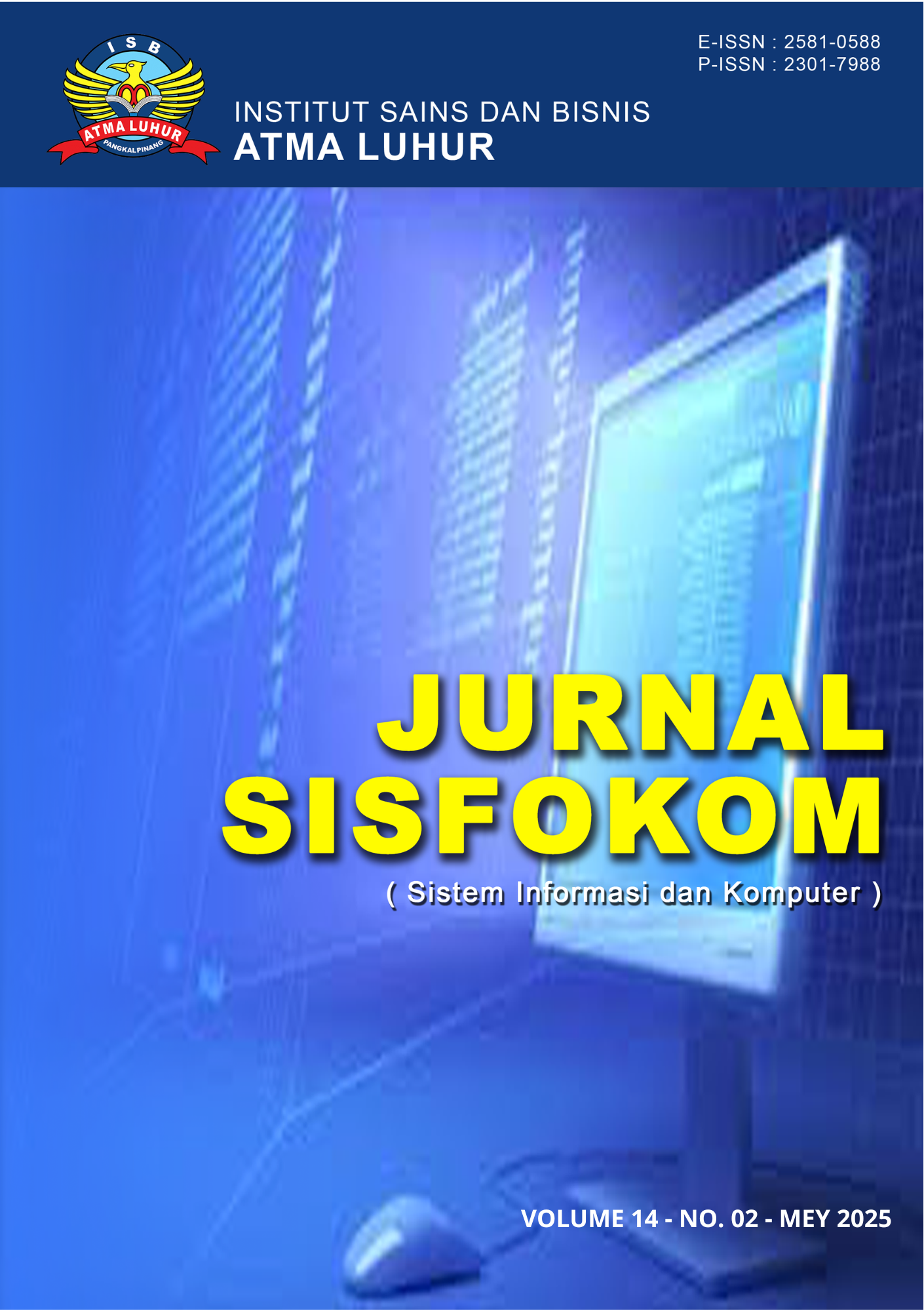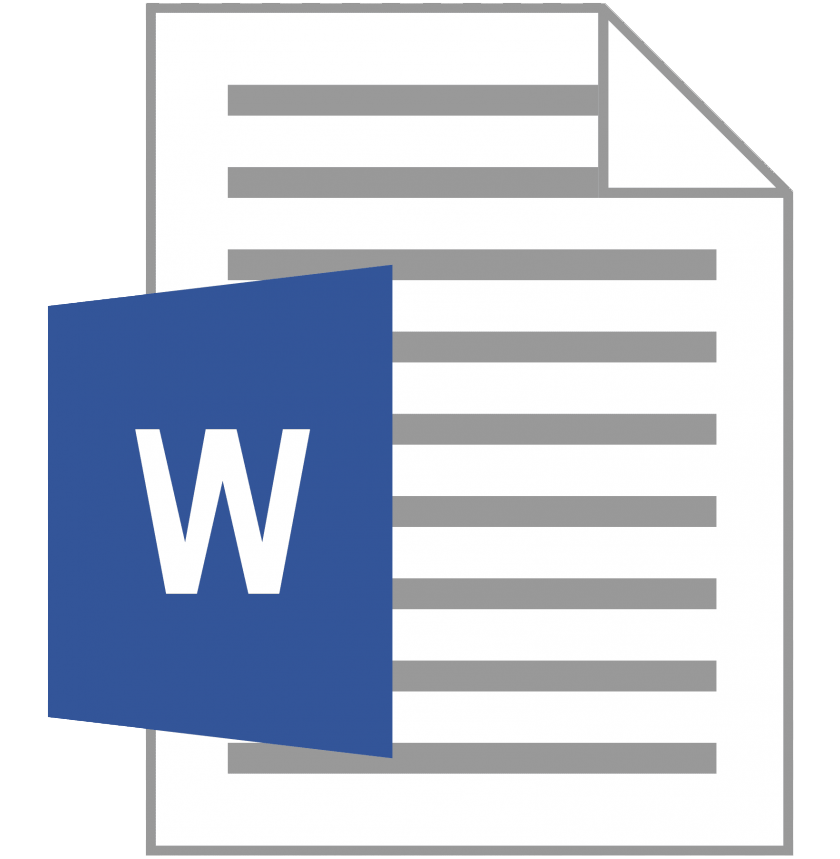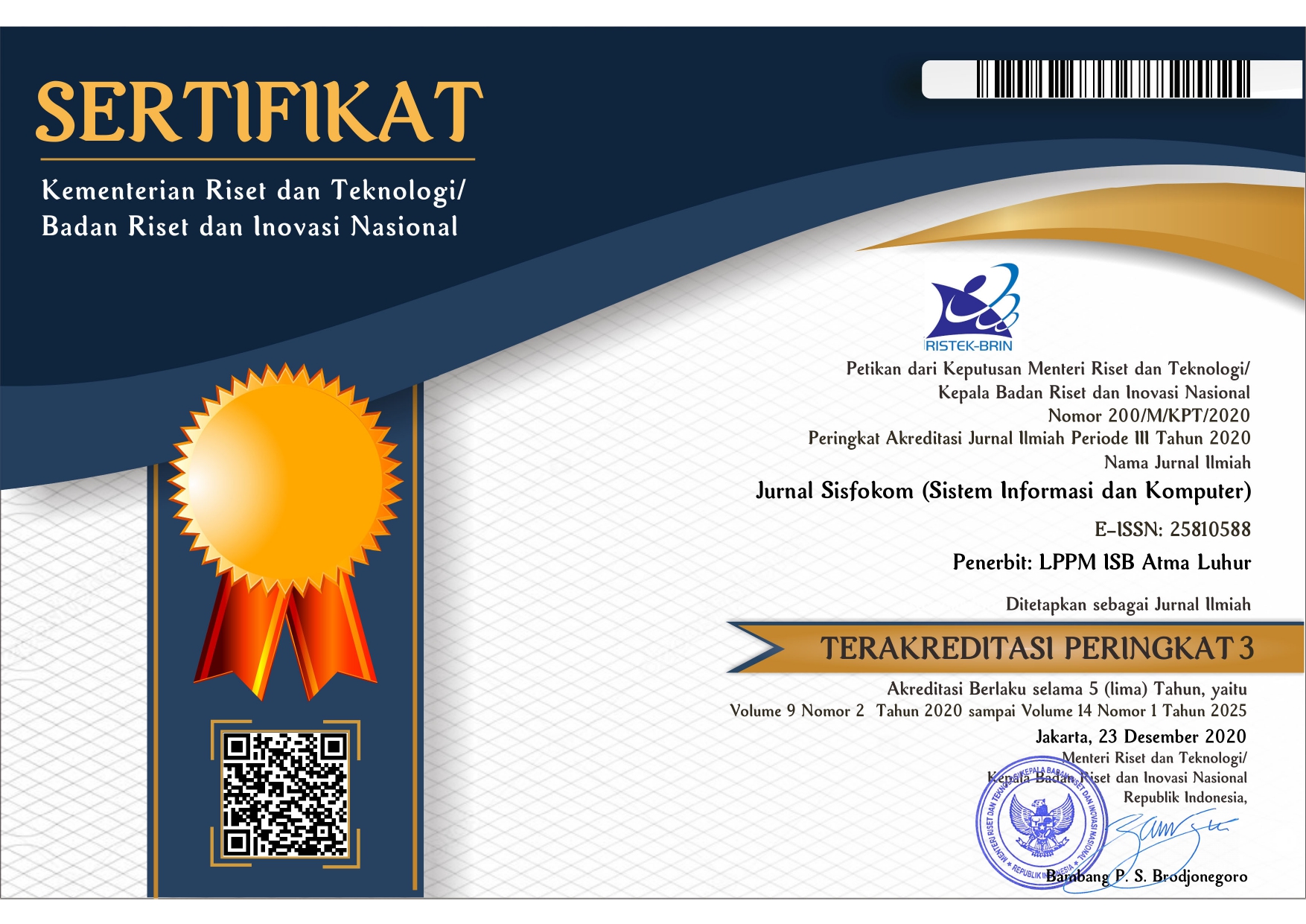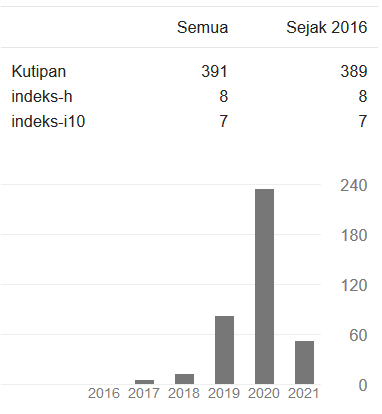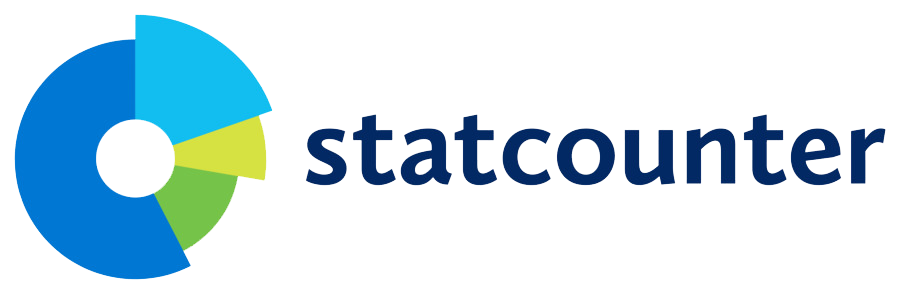Clustering Snack Products Based on Nutrition Facts Using SOM and K-Means for Diabetic Dietary Recommendation
DOI:
https://doi.org/10.32736/sisfokom.v14i2.2342Keywords:
Clustering SSF, nutrition facts, snack healthy labe, SOMAbstract
The number of diabetics in Indonesia continues to rise, with Type II Diabetes Mellitus (DM) dominating 90% of cases. One of the main contributors is the excessive consumption of snack products high in Sugar, Salt, and Fat (SSF), which increases health risks, particularly for diabetics. However, the current nutrition facts provided in the product package is not easy to understand. Creating label for the product can make an effective information to assist people on buying decision. This study aims to segment snack products based on their nutritional facts, particularly focusing on their SSF content, to identify products that are potentially high-risk for diabetics. In this study, data on the nutritional facts of snack products were analyzed. Utilizing a hexagonal Self-Organizing Map (SOM) topology with a 5 × 9 grid, the best clustering method identified was k-means. This method yielded two clusters, with a silhouette index of 0.44, a Dunn index of 0.09, and a connectivity index of 11.14. The first cluster comprises 165 products that have low levels of total fat, saturated fat, sugar, and salt. In contrast, the second cluster consists of 46 products with high total fat and saturated fat content, and this cluster is of particular concern due to its elevated levels of these unhealthy fats. The segmentation results can serve as a reference for more intuitive food labeling, potentially improving consumer awareness and aiding in dietary decision-making, particularly for diabetics.References
International Diabetes Federation, IDF Diabetes Atlas, 10th edn., Brussels, 2021.
A. A. I. P. Wahyuni, "Konsumsi Gula, Garam, Lemak (GGL) Berlebihan Adalah "MAUT"," 12 September 2024. [Online]. Available: https://yankes.kemkes.go.id/view_artikel/3633/reqwest/index.
E. Masri, N. S. Nasution and R. Ahriyasna, "Literasi Gizi dan Konsumsi Gula, Garam, Lemak pada Remaja di Kota Padang," Jurnal Kesehatan, vol. 10, no. 1, pp. 23-30, 2022.
BPOM, "Gerakan Membaca Label Pangan," 8 Maret 2016. [Online]. Available: https://www.pom.go.id/berita/gerakan-membaca-label-pangan.
BPOM, "BPOM Dukung Penuh Pencantuman Nutri-Level pada Pangan Olahan Secara Bertahap," 23 September 2024. [Online]. Available: https://www.pom.go.id/berita/bpom-dukung-penuh-pencantuman-nutri-level-pada-pangan-olahan-secara-bertahap.
I. Dermawan, A. Salma, Y. Kurniawati and T. O. Mukhti, "Implementation of the Self Organizing Maps (SOM) Method for Grouping Provinces in Indonesia based on the Earthquake Disaster Impact," UNP Journal of Statistics and Data Science, vol. 1, no. 4, pp. 337-343, 2023.
N. Y. Kusrahman, I. Purnamasari and F. D. T. Amijaya, "Optimasi Self-Organizing Map Menggunakan Particle Swarm Optimization untuk Mengelompokkan Desa/Kelurahan Tertinggal di Kabupaten Kutai Kartanegara Provinsi Kalimantan Timur," Jurnal Eksponensial, vol. 11, no. 2, pp. 139-144, 2020.
B. Pangestu, D. Purwitasari and C. Fatichah, "Visualisasi Similaritas Topik Penelitian dengan Pendekatan Kartografi Menggunakan Self-Organizing Maps (SOM)," Jurnal Teknik ITS, vol. 6, no. 2, pp. 2337-3520, 2017.
Sugiyono, Metode Penelitian Kuantitatif, Kualitatif, dan R&D, Bandung: ALFABETA, 2019.
P. P. Allorerung, A. Erna, M. Bagussahrir and S. Alam, "Analisis Performa Normalisasi Data untuk Klasifikasi K-Nearest Neighbor pada Dataset Penyakit," JISKA (Jurnal Informatika Sunan Kalijaga), vol. 9, no. 3, pp. 178-191, 2024.
S. J. A. Sumarauw, Data Mining Model Self-Organizing Maps (SOMs), Yogyakarta: Bintang Semesta Media, 2022.
I. Rojas, G. Joya and A. Catala, Advances in Computational Intelligence: 13th International Work-Conference on Artificial Neural Networks, IWANN 2015, Palma de Mallorca, Spain, June 10-12, 2015. Proceedings, Part II, Spain: Springer, 2015.
D. Miljković, "Brief review of self-organizing maps," 40th International Convention on Information and Communication Technology, Electronics and Microelectronics (MIPRO), pp. 1061-1066, 2017.
I. G. Santos, V. Q. Carneiro, A. C. S. Junior, C. D. Cruz and P. C. Soares, "Self-organizing maps in the study of genetic diversity among irrigated rice genotypes," Acta Scientiarum. Agronomy, vol. 41, pp. 1-9, 2019.
S. Kania, D. Rachmatin and J. A. Dahlan, "Program Aplikasi Pengelompokkan Objek dengan Metode Self Organizing Map Menggunakan Bahasa R," Jurnal Eurekamatika, vol. 7, no. 2, pp. 17-29, 2019.
V. Nellie, V. C. Marwadi and N. J. Perdana, "Implementasi Metode Agglomerative Hierarchical Clustering Untuk Sistem Rekomendasi Film," Jurnal Ilmu Komputer dan Sistem Informasi, vol. 11, no. 1, pp. 1-6, 2023.
A. T. R. Dani, S. Wahyuningsih and N. A. Rizki, "Penerapan Hierarchical Clusterinfg Metode Agglomerative pada Data Runtun Waktu," Jambura Journal of Mathematics, vol. 1, no. 2, pp. 64-78, 2019.
R. Sarno, S. I. Sabilla, Malikhah, Purbawa and Ardani, Machine Learning Deep Learning Konsep dan Pemrograman Python, Yogyakarta: Penerbit ANDI, 2023.
A. R. Gunawan, Sudarmin and Z. Rais, "Applied the Self-Organizing Maps (SOM) Method for Clustering Educational Equity in South Sulawesi," ARRUS Journal of Mathematics and Applied Science, vol. 4, no. 1, pp. 6-19, 2024.
D. A. I. C. Dewi and D. A. K. Pramita, "Analisis Perbandingan Metode Elbow dan Silhouette pada Algoritma Clustering K-Medoids dalam Pengelompokan Produksi Kerajinan Bali," Jurnal Matrix, vol. 9, no. 3, pp. 102-109, 2019.
N. Thamrin and A. W. Wijayanto, "Comparison of Soft and Hard Clustering: A Case Study on Welfare Level in Cities on Java Island," Indonesian Journal of Statistics and Its Applications, vol. 5, no. 1, pp. 141-160, 2021.
A. Muhid, Analisis Statistik Edisi ke-2, Sidoarjo: Zifatama Jawara, 2019.
H. Khusnuliawati, "Algoritma Pengelompokkan Menggunakan Self-Organizing Map dan K-Means pada Data Sumber Daya Manusia Provinsi Indonesia," Jurnal Gaung Informatika, vol. 11, no. 1, pp. 1-9, 2018.
N. Husna, F. Hanum and M. F. Azrial, "Pengelompokkan Produk Kemasan yang harus Dihindari Penderita Diabetes Menggunakan Algoritma K-Means Clustering," InfoTekJar: Jurnal Nasional Informatika dan Teknologi Jaringan, vol. 4, no. 1, pp. 167-174, 2019.
Downloads
Published
Issue
Section
License

This work is licensed under a Creative Commons Attribution 4.0 International License.
The copyright of the article that accepted for publication shall be assigned to Jurnal Sisfokom (Sistem Informasi dan Komputer) and LPPM ISB Atma Luhur as the publisher of the journal. Copyright includes the right to reproduce and deliver the article in all form and media, including reprints, photographs, microfilms, and any other similar reproductions, as well as translations.
Jurnal Sisfokom (Sistem Informasi dan Komputer), LPPM ISB Atma Luhur, and the Editors make every effort to ensure that no wrong or misleading data, opinions or statements be published in the journal. In any way, the contents of the articles and advertisements published in Jurnal Sisfokom (Sistem Informasi dan Komputer) are the sole and exclusive responsibility of their respective authors.
Jurnal Sisfokom (Sistem Informasi dan Komputer) has full publishing rights to the published articles. Authors are allowed to distribute articles that have been published by sharing the link or DOI of the article. Authors are allowed to use their articles for legal purposes deemed necessary without the written permission of the journal with the initial publication notification from the Jurnal Sisfokom (Sistem Informasi dan Komputer).
The Copyright Transfer Form can be downloaded [Copyright Transfer Form Jurnal Sisfokom (Sistem Informasi dan Komputer).
This agreement is to be signed by at least one of the authors who have obtained the assent of the co-author(s). After submission of this agreement signed by the corresponding author, changes of authorship or in the order of the authors listed will not be accepted. The copyright form should be signed originally, and send it to the Editorial in the form of scanned document to sisfokom@atmaluhur.ac.id.

